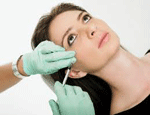
It has become pretty clear to scientists what we see as beautiful is really what we are attracted to is people who we would think are good to reproduce with. We use the face as a guide to determine who is the most suited for our children- for example; asymmetry of the face tends to be caused by parasites or unhealthy living conditions in our early years- this oddity is noticed by our brain.
Why have an attractive face? Stereotyping unattractive faces.
Scientists have found a large correlation between having an attractive face and how people view your life. As a whole, they have more successful, be more content, being more friendly, being more sociable, having more excitement and busy lives. These characteristics were seen put onto unattractive faces. We tend to see the negative traits in people we find unattractive. So for people to view you in the most optimized way possible, it is best to be attractive.
Symmetry
Very asymmetric faces are judged rather unattractive, but very unattractive faces are not necessarily asymmetric. An average in a small pool of people will still generate an unattractive face- the real ideal is found in there measurements :
- Eyes that individually take up 30% of the total width of the face.
- Eyes that are 10% the height of the face.
- Chin the takes up 20% of the height of the face.
- Nose takes of 30% of the face
- Symmetrical positions down the width of the face.
While these are pretty vague, you can actually see this is true if you look at faces you find attractive and test them. Scientists have actually made a 3d map using these statistics and others that are harder to explain, and are able to lay the map over the face of attractive celebrities and find they match to a high percentage. Symmetry is clearly a key factor in the measurements. In regard to nose shape, Studies have found that we find the average features to be beautiful- so having a straight nose for a man or a very slightly curved nose for a woman. No hints of surgical augmentations. Tip should be flow into a curve to the brow. Nose should point up slightly 10 to 105 degrees and is never visibly directly into the nostril. This plastic surgeon discusses the position of the nose and nostrils that are seen as complimentary.
Current Social Colloquial Determination of Attractiveness
America and Europe have specific tastes in this period of time that actually contradict what scientists have found attractive across the spectrum. Some examples of these things are:
- Suntanned skin , even though it is seen as looking older
- Narrow faces, sometimes called cheeky, even though it’s found across the board for people to like baby faces
- Narrower noses, even though it is found the people as a whole prefer noses that take up more of the face
- Thinner eye lids, even though these are signs of aging
- Thin Cheeks (Full checks actually show a good cardiovascular health and immunity to infection)
We seem to know these things unconsciously but because of an American/European standard has still become very different. These things often have to do with status- as people of higher status are seen as more attractive than people of lower status, so by having these things be something someone can have adjusted with facelifts and similar procedures tends to help how attractive we find it.
Baby Faces
Studies have found that adults (particularly women) that have features found in children to be attractive. This includes a large head with a curved forehead, facial features located relatively low, having large eyes and a short small nose. While we find found round cheeks and a small chin are attractive, these things tend to not be preferred in European and American cultures over having thin cheeks. Also, these baby faces tend to not be the average, but we are still attracted to it.
